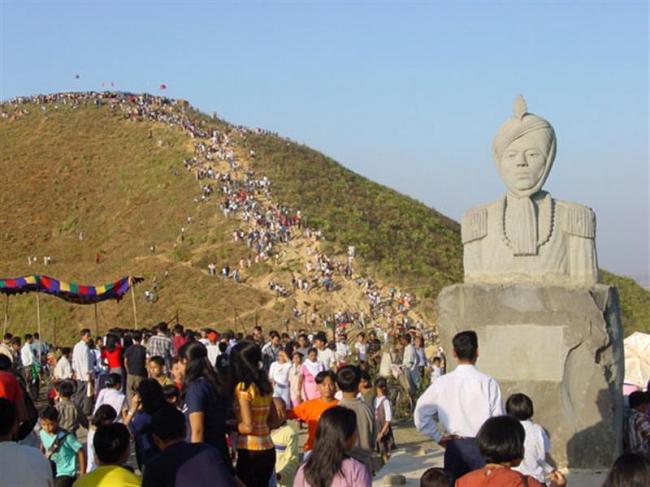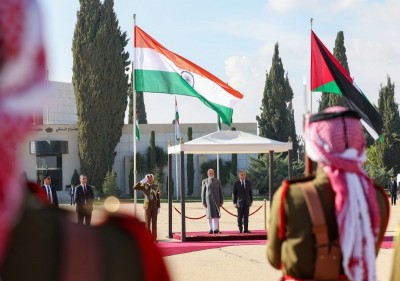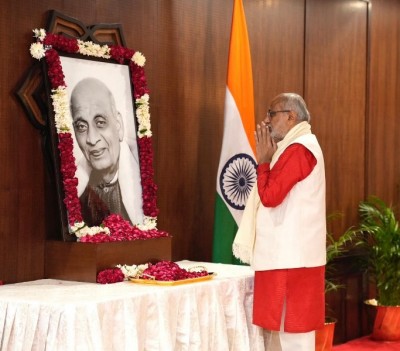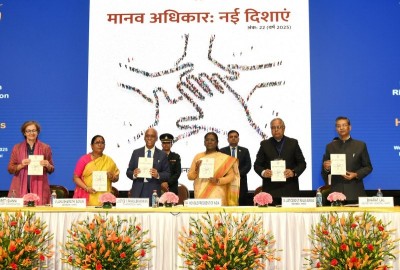
Manipur: Churachandpur: The Heart of 'Kukiland'
On July 27, 2017, a civilian, identified as Thangkhanlun Taitom, was allegedly tortured and killed by Zomi Re-Unification Organisation (ZRO) militants, for 'stealing', in the New Lamka area of the District. ZRO is one of eight constituents of the United People's Front (UPF) which is under SoO agreement with the Union and State Governments since August 22, 2008.
On April 29, 2017, suspected People's Liberation Army (PLA) militants attacked a General Reserve Engineering Force (GREF) water bowser (tanker) killing two local labourers at Beheng near Border Pillar 41 along the Indo-Myanmar border in the Churachandpur District.
According to partial data compiled by the South Asia Terrorism Portal (SATP) at least five persons, including three civilians and two militants, have died in the Churachandpur District in the current year (data till August 13, 2017). During the corresponding period of 2016, only one fatality (a militant) was reported. In fact, through 2016, it was the only fatality the District recorded, the lowest ever recorded, on year on year basis, since 2000; and matched in 2011 when one civilian was killed.
Over all fatalities after registering continuous increases since 2012, recorded a sharp decline through 2016, but are again on the rise in the current year. The comparatively high number of civilian killings, three, in the current year is worrisome. Significantly, it is the highest number of civilian fatalities recorded during this period (January 1 to August 13) in the District since 2008, when four civilians had died, with the exception of 2015, which also saw three civilian fatalities during this period.
Also disturbing are the fratricidal turf wars between militant groups. Out of 33 militants killed since August 22, 2008 (the date of the signing the SoO agreement), at least 13 were killed in internecine clashes. Another twelve were killed by SFs; one militant was lynched by local people; and the circumstances of the death of the remaining seven could not be ascertained.
The District of Churachandpur, with an area of 4,750 square kilometers, came into existence in the year 1969. Churachandpur was previously known as Manipur South District, and shares its borders with the Tamenglong, Bishnupur, Senapati and Jiribam (earlier part of Imphal East District) Districts of Manipur; the Cachar District of Assam; and the Champhai and Kolasib Districts of Mizoram. Churachandpur District also falls along the India-Myanmar International border, sharing its borders with the Chin region of Myanmar. 'Sandwiched' between these areas, many of which are facing their own sets of insurgency-related problems, Churachandpur provides a perfect setting for insurgency to thrive, serving as a critical transit route for several insurgent groups. The Mizo National Front (MNF), which had launched an armed rebellion against the Government of India on February 28, 1966, had also used this District as a transit route for its operations. That rebellion came to an end with the MNF signing an Accord in 1986. Even Meitei groups such as the PLA, Kangleipak Communist Party (KCP), Kanglei Yowel Kanna Lup (KYKL) and United National Liberation Front (UNLF), have occasionally used the District as a transit from Myanmar to India and vice versa.
The insurgency in Churachandpur, was led by Kuki-Zomi tribal groups who claimed to 'protect and promote' the interests of their community with the proclaimed objective of creating Zalengam (Land of freedom), a separate Kuki-Zomi State. Apart from Churachandpur, Kangpokpi District (earlier in Senapati District), some parts of the now-reorganized Senapati District, Tamenglong, Chandel and Ukhrul Districts, are included in the imagined Zalengam 'State'.
In the late 1980s, KNO and the Kuki National Front (KNF) were leading the insurgency in the District. Later, they were joined by their own splinter groups (these two formations faced multiple splits) and by smaller tribal groups like the Hmar, Paite and Kom. Further on, there was a process of consolidation within the various groups and two principal formations emerged - KNO and United People's Front (UPF). KNO accounted for 15 constituent groups: Kuki National Army (KNA), the armed wing of KNO; Kuki National Front - Military Council (KNF-MC); Kuki National Front - Zogam (KNF-Z); United Socialist Revolutionary Army (USRA); Hmar National Army (HNA); United Komrem Revolutionary Army (UKRA); United Minorities Liberation Front (UMLF); Zou Defence Volunteers (ZDV); Kuki Liberation Army (KLA); Pakan Reunification Army (PRA); Kuki Revolutionary Army (KRA); United Old Kuki Liberation Army (UOKLA-Khoipu-Maring); United Tribal Liberation Army (UTLA); and Kuki National Front-Samuel (KNF-S). Similarly, UPF comprises eight groups: Kuki National Front (KNF); Zomi Revolutionary Organisation (ZRO)/Zomi Revolutionary Army (ZRA); Kuki Revolutionary Army-United (KRA-United); Zomi Defence Force (ZDF), United Kuki Liberation Front (UKLF), Kuki Revolutionary Front (KRF), Zomi Defence Volunteers (ZoDV); and Hmar People's Convention-Democratic (HPC-D).
Significantly, the tripartite SoO agreements, between the Union Government, State Government and, separately, the two conglomerates - UPF and KNO - were signed on August 22, 2008, and included an understanding that all the parties involved would abide by the Constitution of India and commit themselves to the territorial integrity of Manipur.
Since then, the SoO agreements have been periodically extended, most recently for another year during tripartite talks held in New Delhi on August 9, 2017. Though the talks did not touch upon any political agenda, it is reported that 'political dialogue' would be held with the Government of India's interlocutor Dineshwar Sharma, who is likely to arrive at Imphal 'soon' (no time frame is specified). In 2016, the Union Government had held two rounds of talks with KNO and UPF. During the first meeting, KNO and UPF leaders had stated on June 15, 2016, that the 'central core demand is for political settlement within the Indian Constitution in accordance with Article 3, for a statehood that comprise the lands in the hills of Manipur for which the Chieftains possess legal land titles'. The second round of tripartite talks was held in New Delhi on October 19, 2016. No details were published regarding this round of talks.
Meanwhile, the State's 'territorial integrity' continues to remain sacrosanct for many. United Committee Manipur (UCM), a citizen's organisation spearheading the campaign for safeguarding Manipur's territorial integrity, cautioned both the Central and the Manipur Governments against "bargaining" on the State's boundary. Elangbam Johnson, president of UCM, declared, on August 8, 2017, "The agenda should not include creation of a Kuki State. If the agenda include division of Manipur in any form representatives of the Manipur Government should walk out of the talks."
On December 9, 2016, the Manipur State Government announced the formation of a new District - Pherzawl - which was carved out of Churachandpur District. The Pherzawl District compromises Pherzawl, Thanlon, Parbung, Tipaimukh and Vangai Range sub-divisions, which were earlier part of Churachandpur. It is believed that the step was primarily driven by the need to increase the District's developmental prospects. Infrastructural augmentation and a robust law and order mechanism would impact significantly on such prospects.
The situation in Manipur has shown gradual improvement over the longer time-frame, but remains fragile. In particular, it is vulnerable to political destabilization and the endemic inefficiency and corruption of successive governments.
Support Our Journalism
We cannot do without you.. your contribution supports unbiased journalism
IBNS is not driven by any ism- not wokeism, not racism, not skewed secularism, not hyper right-wing or left liberal ideals, nor by any hardline religious beliefs or hyper nationalism. We want to serve you good old objective news, as they are. We do not judge or preach. We let people decide for themselves. We only try to present factual and well-sourced news.







